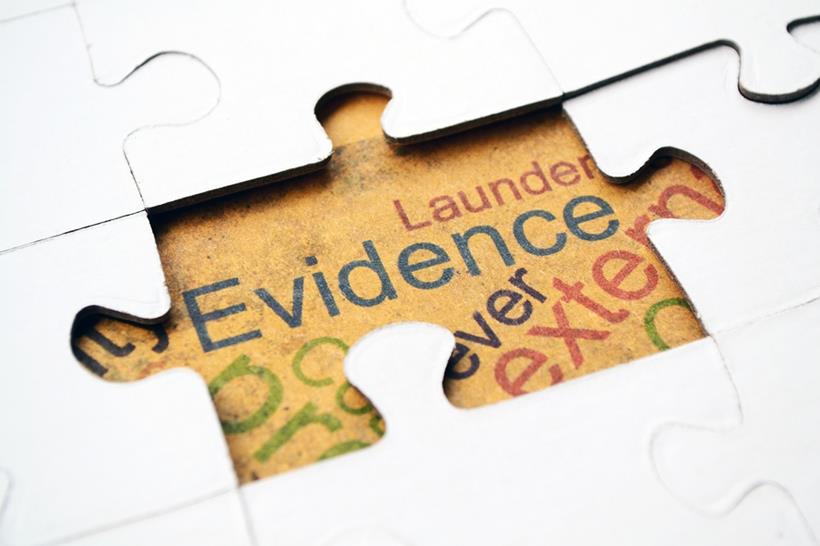
Over the last few years I’ve been involved in several Electronic Documents and Records Management System (EDRMS) implementations. I’ve also been involved in a number of Information Technology (IT) implementations which, to all intents and purposes, were about the management of information.
When we start a consultation, one of the outputs we deliver is a list of motivators and blockers to change. I won’t bore you with the details of our methodology, but we set out to talk with sceptics in particular to find out what it is about the system implementation that makes them believe it will not work. They are really good value, because their unique perspective gives us a great idea about what those blockers and motivators are.
What we inevitably find in any EDRMS or information management implementation is that there are a number of misconceptions held by stakeholders about both what information management means, and about the functionality and capability of the systems used to solve business process issues. Taking those stakeholders – including users, managers, IT staff, and senior executives – on a journey away from unconscious incompetence is a key element to any successful implementation.
And yet, despite the all-encompassing discussions about ‘Big Data’ that everyone talks knowingly about, there seems to be a staggering gulf in the thinking that occurs about the management of information. Take any standpoint: strategic, technical, systems functionality, process, people, information security; the maturity of the conversations being had and the understanding of the potential of EDRMS and information management principles is very limited.
For example, I have had two clients who made tactical decisions about their preferred information repositories based on the erroneous assumption that Freedom of Information (FOI) searches would be able to find drafts and revisions stored in an EDRMS, but not those stored in shared drives. In both cases, the desire was to shield the organisation from what they perceived as unfair scrutiny, but in both cases the supposition was wrong – not only in terms of the functionality of an EDRMS, but also in terms of the regulations governing FOI searches. Freedom of Information applicants are quite within their rights to seek access to email attachments, let alone drafts on a shared drive.
The lack of thinking and knowledge staggered me in both cases.
These types of assumptions and lack of thinking cripple the efficient and effective management of information in most organisations I have seen. I am at the point now where, near the beginning of an engagement, I look for evidence of a few typical deficits in knowledge and thinking. Below I consider some of the symptoms of those deficits, along with some thoughts on resolving them.
Strategic Deficits
When there’s a deficit in strategic thinking, the organisational information management strategy is somehow seen to be the purview of people regarded as records management experts or IT ‘boffins’, and there is a remarkable hands-off approach by the rest of the executive team.
When taken seriously, the management of information has three purposes:
- To retain corporate information and knowledge to make it easily accessible to others who might benefit from it.
- To improve productivity.
- To reduce risk.
An information management strategy has no intrinsic value in its own right. It should be discussed and determined in the light of the corporate strategy which should help determine what information is considered to be an asset to the organisation.
It should be treated seriously though, and as much as there is an enterprise technical architecture document, there should be an information architecture document and an information security management system supporting the information architecture.
It is very rare that I see an information management strategy forming a closely coupled part of the organisational strategy. It is even rarer to see an information management architecture document. How do people establish the criteria for making decisions without it?
Technical Deficits
I’ve been surprised at the number of times I’ve found that there seems to be little in the way of a strategic deployment of technology and systems. Often there is no real systems architecture documentation or planning. There are dozens if not hundreds of team databases. New technology and software that solves a problem in one branch of an organisation seems to be able to be bought with little consideration of the overall structure, or the mix of technology and software that supports the organisation’s strategic needs.
This is exacerbated when the organisation has recordkeeping zealots who do not seem to be able to realise that every record, however defined by the organisation, need not reside in the EDRMS. It is possible to define a recordkeeping system and determine which business systems meet the appropriate requirements and therefore form part of the recordkeeping system with the EDRMS.
Systems Functionality Deficits
This is probably the most common of all knowledge deficits. Decisions are made about policies, processes, and procedures (such as my opening example on whether to include drafts in an EDRMS) that are just downright poor for the overall management of information assets.
It is fair to expect that executives do not fully comprehend the functionality of an EDRMS, for example. However, the systems administrator or records manager should see it as a priority to know the strengths and weaknesses of their chosen system. Most often it is not.
Vendors are quite disappointing in this aspect too. They fall in two camps for me. One camp spends their time spruiking the benefits of big data without being able to answer a simple question about the functionality of their system – as happened at one event I attended. The other pushes automation by the system or system add-on over getting to grips with the functionality and how to integrate that functionality into the business processes to improve productivity and reduce risk.
Where are the vendors who educate people in how they may use the functionality to suit their culture and processes and their needs balanced against their limitations?
Process Deficits
The most obvious observation I make in most organisations is that they have not mapped their processes, and the knowledge of what the process actually is varies as much as the practice, as you go from one team to another. It’s a bit hard to integrate system functionality into a process to improve productivity and reduce risk when we don’t even know what the process is.
A corollary to that I often find is that record and information management (RIM) teams do not know how to map processes.
If the business does not know its processes and we expect the RIM team to drive the adoption of better information management practices and systems, then it is actually necessary for the RIM team to acquire process mapping skills.
People
I wish I had a dollar for every time I’ve heard someone say “Our people are just waiting for this, we won’t have any problems with implementing.”
My usual internal response is to wonder if the person I’m talking to is serious.
The information management space is littered with failed implementations. I have seen often the two times failed implementation. I have seen often the 5-10% adoption level. I have seen the archiving-only approach which leaves so much productivity gain untapped.
Our research shows that abject failure runs at 25%, and I suspect from qualitative reviews that if ‘failure’ was defined as ‘less than 85% adoption of better recordkeeping practices and systems’, that the failure rate could be triple that.
The most frequent common denominator, despite all of the foregoing, is that the people factor is underestimated. From the central IT group who are desperately clinging to the mainframe or seeing SharePoint as the saviour of all things, to unconsciously incompetent executives, to users who have to give up their old system in which they have become experts, to legal who always believe they have special needs outside the realm of any information management approach and system, there are a plethora of people who, at some time in the life of a project, will have a perceived problem.
The Impact
The impact of even one of these knowledge deficits is a substandard management of information. The impact of two or more is from my experience, the probability of wasted time in rework and manual operations, delays in decision-making, uninformed decisions and risks to people, assets, the environment and the reputation of organisations that simply should not occur. Consider whether your critical thinking is up to scratch before you embark on your next RIM implementation, or you might find yourself back where you started.






